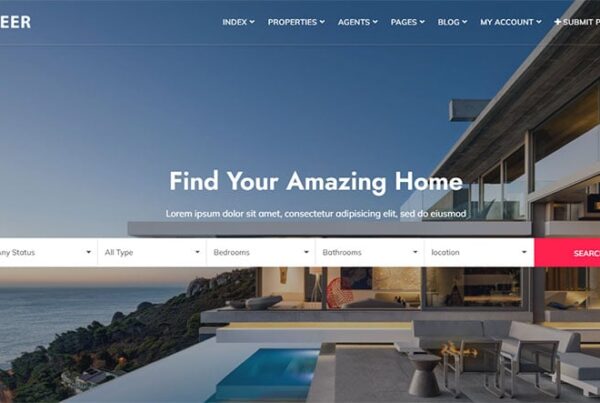In today’s digital world, a website is far more than a digital business card. Every click from a visitor represents an opportunity to engage, inform, and convert that person into a paying client. Small businesses often focus on attracting visitors to their website, but many struggle to turn that traffic into tangible results. Optimizing your website for conversions is essential to maximizing the return on your marketing efforts and ensuring that the time, energy, and money spent driving traffic translates into measurable growth.
Understanding the Conversion Mindset
Before diving into optimization strategies, it’s important to understand what a conversion is. A conversion occurs when a website visitor completes a desired action. This could be making a purchase, filling out a contact form, signing up for a newsletter, or scheduling a consultation. Every action a visitor takes is an opportunity to deepen their engagement with your brand and move them closer to becoming a customer.
The key to conversions is understanding your audience. Who are your visitors? What problems are they trying to solve? What motivates their decisions? By mapping the customer journey and identifying pain points, you can create a website experience that naturally guides visitors toward taking action.
Clear and Compelling Calls to Action
One of the simplest yet most impactful ways to improve conversions is through clear and compelling calls to action, or CTAs. A CTA tells your visitor exactly what step to take next. Whether it’s “Schedule a Consultation Today,” “Shop Now,” or “Sign Up for Our Newsletter,” the wording, placement, and design of your CTA can dramatically influence user behavior.
CTAs should be prominently displayed and easy to understand. They should stand out visually but also align with your brand’s style and voice. Using actionable language, creating a sense of urgency, or highlighting a unique benefit can increase the likelihood that a visitor will take the desired action.
Simplify Navigation and User Experience
Visitors won’t convert if they can’t find what they’re looking for quickly. Simplified navigation and an intuitive user experience are crucial for guiding users through your website. Clear menus, logical page hierarchy, and easy-to-locate information reduce frustration and keep visitors engaged.
Consider your website from the perspective of a first-time visitor. Can they find pricing, services, or product information easily? Are contact details visible without excessive searching? Every additional click or confusing layout element increases the risk of losing a potential customer. A streamlined, user-friendly experience builds trust and encourages conversions.
Optimize for Mobile Devices
In 2025, mobile devices account for a significant portion of web traffic. A website that isn’t optimized for mobile risks losing a large percentage of potential customers. Mobile optimization includes responsive design, fast loading times, and easy-to-use forms and buttons that work well on smaller screens.
Mobile users often browse with intent, looking for quick solutions. If your website is difficult to navigate or slow to load on a phone or tablet, visitors are likely to leave and seek alternatives. Optimizing for mobile ensures that every visitor, regardless of device, has a positive experience and can easily take the next step toward conversion.
Build Trust with Professional Design and Credibility Signals
Trust is a major factor in conversion. Visitors are more likely to become paying clients if they feel confident in your business’s reliability and professionalism. High-quality design, clear messaging, and visible credentials all contribute to trust.
Including testimonials, reviews, client logos, case studies, and industry certifications reinforces credibility. High-quality images, consistent branding, and polished visuals also communicate professionalism. The more your website communicates trust, the more comfortable visitors will feel taking action.
Strategic Content Placement
Content plays a major role in guiding visitors toward conversion. Strategically placing key information, benefits, and CTAs throughout your site ensures that visitors can easily find what they need to make a decision.
Landing pages should be focused, concise, and designed with a single goal in mind. Long scrolling pages can work, but only if they provide value at each step and continually lead the visitor toward the desired action. Highlight benefits, address pain points, and provide clear instructions on how to take the next step.
Leverage Social Proof
Social proof is one of the most effective tools for influencing visitor behavior. People are more likely to take action if they see that others have had positive experiences with your business. Testimonials, reviews, user-generated content, and case studies all demonstrate that your product or service delivers results.
Showcasing social proof prominently on your website, especially near CTAs, reinforces credibility and encourages visitors to convert. Positive experiences shared by previous clients help reduce hesitation and build confidence in your offerings.
Use Analytics to Refine Your Strategy
Website analytics provide invaluable insight into visitor behavior and conversion rates. Tools like Google Analytics and heat mapping software show which pages are performing well, where visitors are dropping off, and which actions are being taken.
By analyzing this data, you can identify areas for improvement. Perhaps a form is too long, a CTA is being overlooked, or a page isn’t effectively communicating the value of your service. Continually monitoring and refining your website based on analytics ensures that your conversion strategy evolves with your audience and market trends.
Speed and Performance Matter
Website speed is a critical factor in both user experience and conversions. Visitors expect pages to load quickly, and delays can lead to frustration and abandonment. Optimizing images, minimizing unnecessary scripts, and using reliable hosting ensures that your website performs well under all conditions.
A fast, responsive website keeps visitors engaged and reduces the risk of losing them to competitors. Every second saved in load time increases the likelihood that a visitor will stay, explore, and ultimately convert.
Conclusion
Turning website visitors into paying clients requires a deliberate, strategic approach. From understanding your audience and crafting compelling calls to action, to optimizing design, navigation, mobile experience, and trust signals, every element of your website should work together to guide visitors toward conversion.
In 2025, small businesses cannot afford to simply attract traffic and hope for the best. Maximizing the value of each visitor ensures that marketing efforts generate measurable results, revenue, and growth. By focusing on user experience, credibility, strategic content placement, and performance, businesses can transform clicks into customers and build a website that not only draws attention but drives tangible success.



